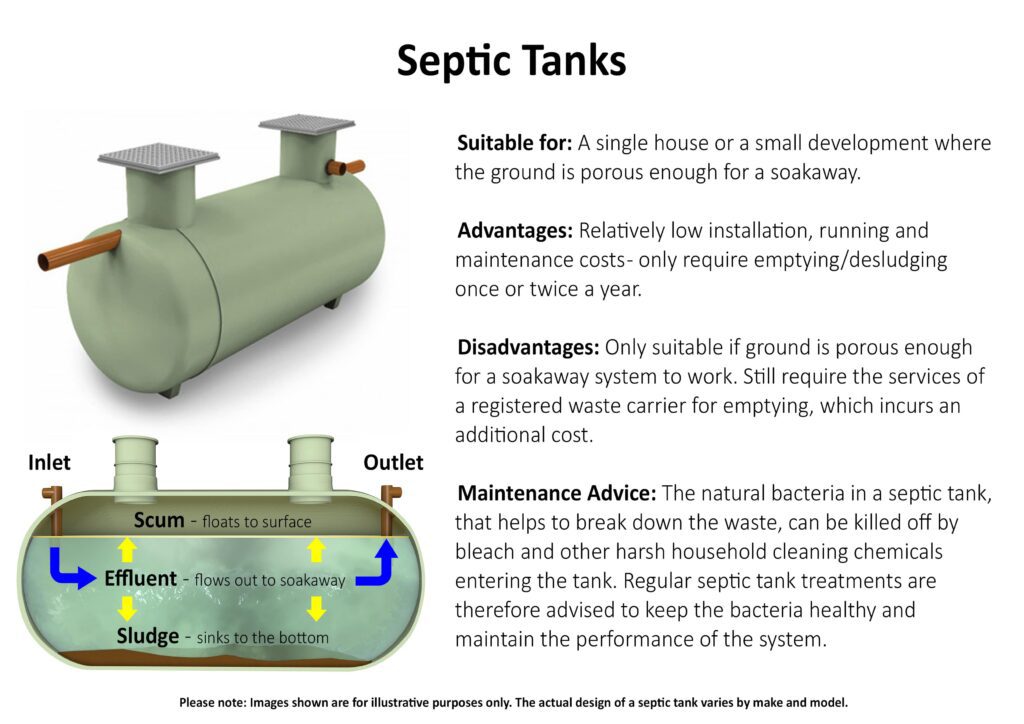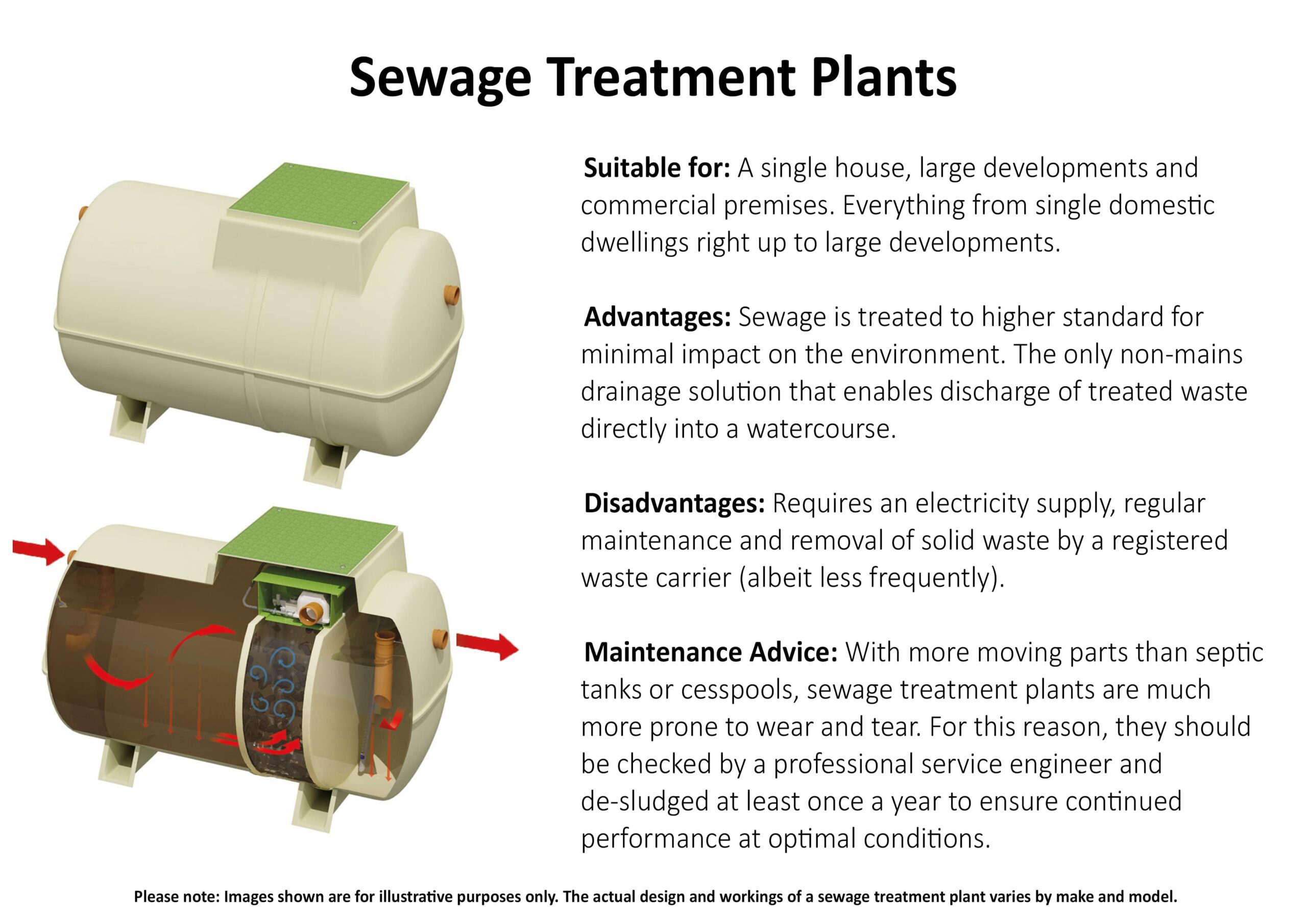Are you considering installing a wastewater management system for your residential or commercial property? It’s important to understand the differences and benefits between a sewage treatment plant and a septic tank. A sewage treatment plant is a centralized system that treats and purifies wastewater before releasing it back into the environment, while a septic tank is a decentralized system that stores and partially treats wastewater on-site. In this article, we will explore the variations and advantages of each system, helping you make an informed decision that suits your needs and budget.
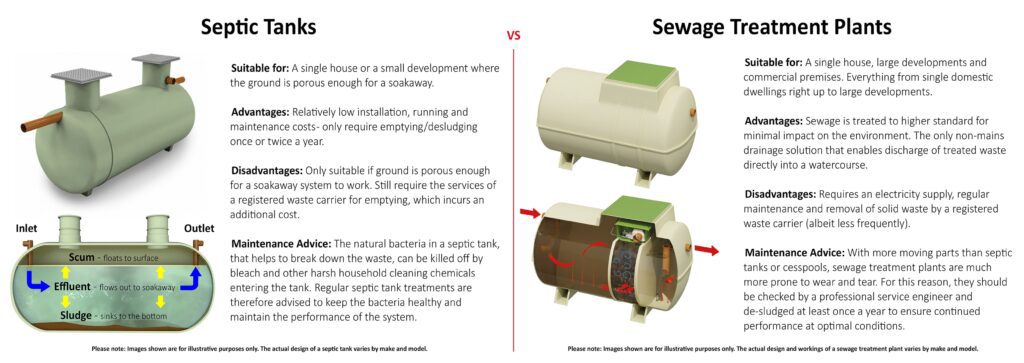
What is a Sewage Treatment Plant?
Definition
A sewage treatment plant, also known as a wastewater treatment plant, is a facility that is designed to remove contaminants from household, industrial, and commercial wastewater. It is a centralized system that is typically operated by local governments or municipalities.
Function
The primary function of a sewage treatment plant is to collect, treat, and discharge wastewater in a safe and environmentally responsible manner. This involves several processes, including physical, biological, and chemical treatment methods.
The first step in the treatment process is the removal of large debris and solids through a process called screening. After this, the wastewater goes through primary treatment, where settling tanks are used to separate solid materials from the liquid. The liquid portion then undergoes secondary treatment, which involves the use of bacteria or other microorganisms to break down organic matter. Finally, the treated wastewater is disinfected before being released back into the environment.
What is a Septic Tank?
Definition
A septic tank is a small-scale sewage treatment system that is typically used for individual or single-family homes. It is an on-site system that is buried underground and consists of a storage tank and a drain field.
Function
The function of a septic tank is to collect and hold household wastewater. It separates solid materials from the liquid and allows the liquid to flow out into the drain field, where it is further treated by the surrounding soil. Bacteria in the drain field help to break down any remaining organic matter, allowing for the safe disposal of the treated wastewater.
Differences between Sewage Treatment Plants and Septic Tanks
Infrastructure
One of the key differences between sewage treatment plants and septic tanks is the infrastructure involved. Sewage treatment plants are large-scale facilities that require extensive infrastructure, including collection systems, treatment plants, and disposal methods. On the other hand, septic tanks are individual systems that only require a storage tank and a drain field, making them more suitable for individual homes or small communities.
Treatment Process
While both sewage treatment plants and septic tanks aim to treat wastewater, the treatment processes involved are different. Sewage treatment plants employ a combination of physical, biological, and chemical processes to remove contaminants from wastewater. In contrast, septic tanks rely on natural bacterial processes and the absorption capacity of the surrounding soil to break down and treat wastewater.
Maintenance
Maintenance requirements also vary between sewage treatment plants and septic tanks. Sewage treatment plants require regular monitoring, maintenance, and repairs to ensure proper functioning. This is typically carried out by trained professionals. Septic tanks, on the other hand, require routine pumping to remove accumulated solids and ensure the system’s efficiency. This can be done by professionals or homeowners themselves.
Efficiency
In terms of efficiency, sewage treatment plants are generally more effective at treating wastewater compared to septic tanks. Sewage treatment plants are designed to handle large volumes of wastewater and have processes in place to remove a wide range of contaminants. Septic tanks, while effective for individual households, have limited capacity and may not be able to adequately treat large amounts of wastewater.
Benefits of Sewage Treatment Plants
Environmental Impact
Sewage treatment plants offer several benefits in terms of environmental impact. By removing contaminants from wastewater, these plants help to protect local water sources and ecosystems. Treated wastewater can be safely discharged back into rivers, lakes, or oceans, without posing a risk to aquatic life or human health. Additionally, sewage treatment plants can help prevent the spread of waterborne diseases and improve overall water quality.
Public Health
Sewage treatment plants play a crucial role in safeguarding public health. By effectively treating wastewater, these plants reduce the risk of waterborne diseases, such as cholera, typhoid, and hepatitis. Proper treatment also helps to remove harmful chemicals and pollutants from wastewater, ensuring that the water supply remains safe for consumption and use.
Water Reuse
Another significant benefit of sewage treatment plants is the ability to reuse treated wastewater. Treated wastewater can be used for irrigation, industrial processes, or even for recharge of groundwater. This reduces the strain on freshwater sources and promotes sustainable water management practices.
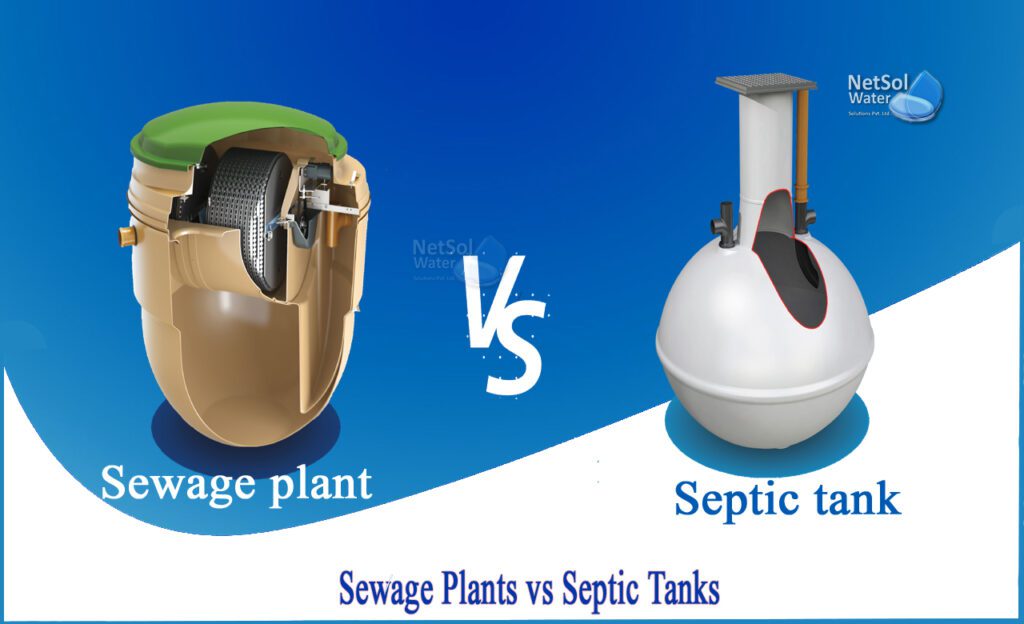
Benefits of Septic Tanks
Lower Initial Cost
One of the main advantages of septic tanks is their lower initial cost compared to sewage treatment plants. Septic tank systems are generally less expensive to install, making them a more affordable option for individual homeowners or small communities.
Independence from Municipal Systems
Septic tanks provide independence from municipal sewage systems. This means that homeowners with septic tanks are not reliant on the infrastructure of local governments and have more control over their wastewater management. This can be particularly beneficial in areas where municipal systems are not available or may be unreliable.
Efficient in Rural Areas
Septic tanks are especially efficient in rural areas where municipal sewage systems may not reach. They provide a practical solution for wastewater treatment in areas that are not densely populated or where the terrain makes it challenging to install centralized sewage treatment plants. Septic tanks allow for effective and convenient wastewater management in such situations.
Comparing Costs
Installation
When it comes to installation costs, septic tanks generally have a lower upfront cost compared to sewage treatment plants. The cost of installing a septic tank will depend on factors such as the size of the tank, the soil conditions, and the accessibility of the site. Sewage treatment plants, on the other hand, require substantial infrastructure and are more expensive to install.
Ongoing Maintenance
Both sewage treatment plants and septic tanks require ongoing maintenance to ensure proper functioning. However, the cost of maintenance can vary. Sewage treatment plants typically require regular monitoring, inspections, and repairs, which may involve hiring professionals. Septic tanks, on the other hand, require routine pumping to remove accumulated solids, which can be done by professionals or homeowners themselves. In terms of cost, ongoing maintenance for septic tanks is generally lower compared to sewage treatment plants.
Upgrades
Upgrading a septic tank system can be more challenging and expensive compared to sewage treatment plants. As household needs change or regulations become stricter, septic tank systems may require modifications or upgrades to meet new standards. This can involve expanding the drain field, installing additional tanks, or replacing the entire system. Sewage treatment plants, while still requiring upgrades, have more flexibility and capacity for expansion or modification.
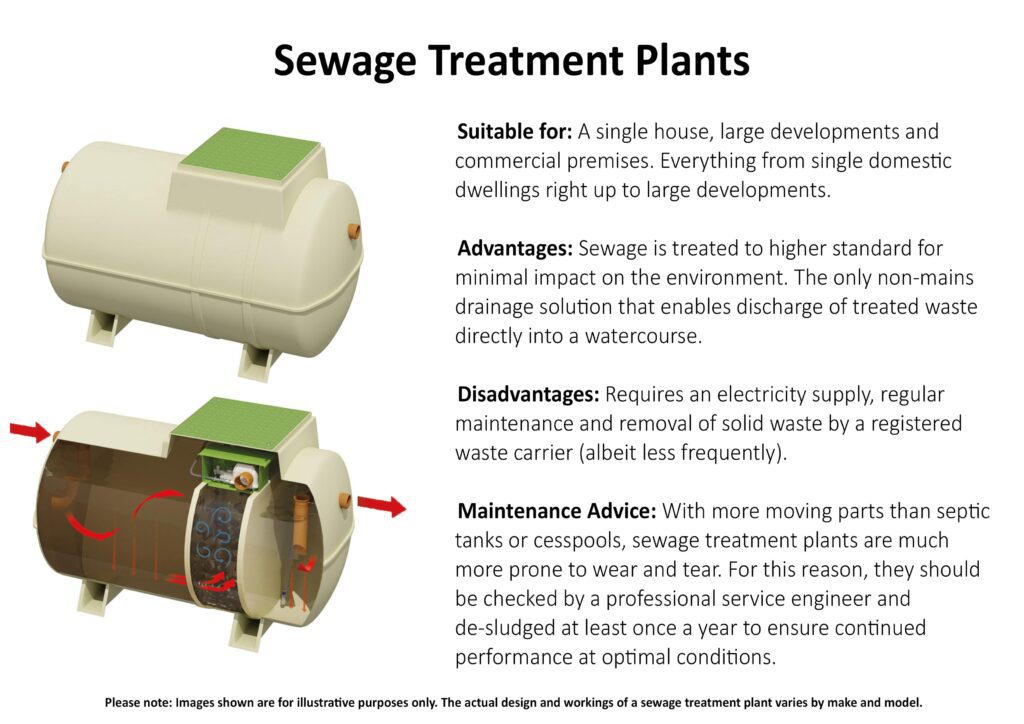
Regulations and Permits
Sewage Treatment Plants
Sewage treatment plants are subject to strict regulations and permitting requirements. These regulations ensure that the treatment process effectively removes contaminants and protects public health and the environment. Permits are typically required for the construction, operation, and discharge of treated wastewater from sewage treatment plants. Compliance with these regulations and permits is essential and may involve regular inspections and monitoring.
Septic Tanks
Regulations for septic tanks vary depending on the location and jurisdiction. In some areas, septic tanks may not require permits or inspections if they meet certain criteria. However, in other locations, permits may be required for the installation and operation of septic tanks. It is important for homeowners to understand and comply with local regulations to ensure the proper functioning of their septic tanks and protect the environment and public health.
Choosing the Right Option
Population Density
The choice between a sewage treatment plant and a septic tank depends on several factors, including population density. Sewage treatment plants are more suitable for densely populated areas where centralized infrastructure can efficiently collect, treat, and dispose of wastewater from a large number of households. In contrast, septic tanks are a practical choice for areas with lower population densities, where installing and maintaining a centralized sewage treatment plant may not be feasible.
Location
Location is another important factor to consider when choosing between a sewage treatment plant and a septic tank. Sewage treatment plants require adequate space for infrastructure, including treatment plants, collection systems, and disposal methods. They are typically located away from residential areas due to the possible odors and noise associated with the treatment process. Septic tanks, on the other hand, can be installed on-site, making them suitable for properties with limited space or in areas where there are no suitable locations for a sewage treatment plant.
Budget
Budget considerations also come into play when deciding between a sewage treatment plant and a septic tank. Sewage treatment plants require significant investments in infrastructure, construction, and ongoing maintenance. Homeowners may need to bear part of the cost through taxes or fees. Septic tanks, while requiring upfront costs for installation and routine maintenance, are generally more affordable for individual homeowners or small communities. It is important to consider long-term costs, such as upgrades or repairs, when making a budgetary decision.
Long-term Plans
Long-term plans and goals should also be taken into account when choosing between a sewage treatment plant and a septic tank. Sewage treatment plants are more suitable for areas with long-term development plans and expected population growth. They can accommodate increasing wastewater volumes and have the flexibility for expansion and upgrades. Septic tanks, while suitable for individual homes or small communities, may not be scalable in the long term and may require significant modifications or replacements if there are changes in household needs or regulatory requirements.
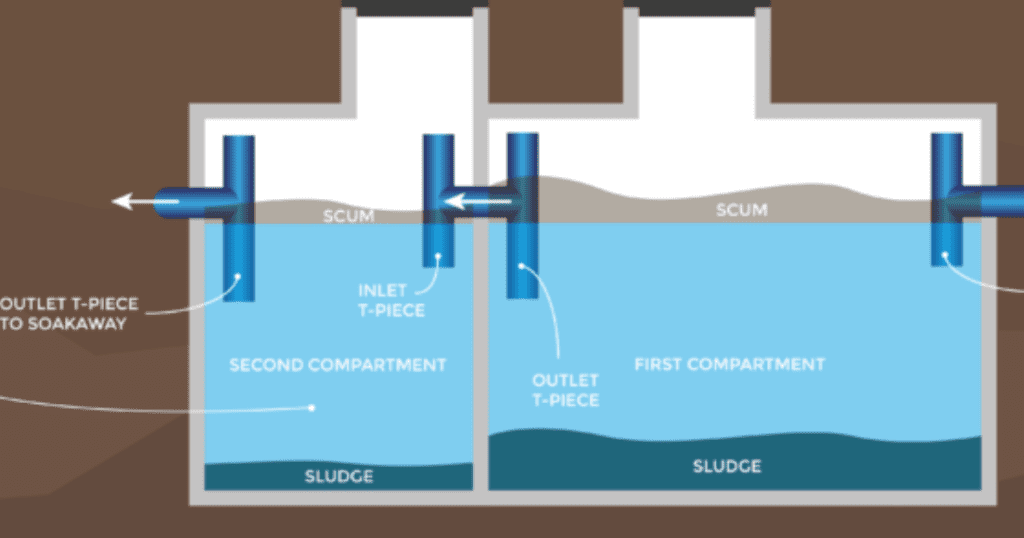
Environmental Impact
Sewage Treatment Plants
Sewage treatment plants have a positive environmental impact. By effectively treating wastewater, they prevent contaminants from entering water bodies and ecosystems. Treated wastewater can be safely discharged back into the environment without causing harm to aquatic life or human health. Additionally, sewage treatment plants help to improve overall water quality, reduce the risk of waterborne diseases, and promote sustainable water management practices.
Septic Tanks
Septic tanks can have a negative environmental impact if not properly maintained or if there are issues with the system. Improperly maintained septic tanks can lead to the contamination of groundwater, surface water, or nearby wells. This can result in the pollution of local water sources and the potential spread of waterborne diseases. It is essential to adhere to proper maintenance practices, such as routine pumping and regular inspections, to minimize the environmental impact of septic tanks.
Conclusion
In conclusion, sewage treatment plants and septic tanks serve the important function of treating wastewater and protecting the environment and public health. Sewage treatment plants are large-scale facilities that are suitable for densely populated areas, while septic tanks are individual systems that are more practical for individual homes or small communities. Both options have their advantages and should be chosen based on factors such as population density, location, budget, and long-term plans. Proper maintenance and compliance with regulations and permits are crucial for both sewage treatment plants and septic tanks to ensure their effective functioning and minimize their environmental impact.
